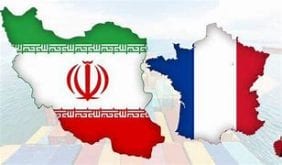Al-Monitor — Iran’s police chief Hossein Ashtari issued yet another warning to the protesters who have been flocking Iranian streets for nearly three months since the death of 22-year-old Mahsa Amini in custody of hijab enforcing Guidance Patrol.
“Security forces will no longer exercise restraint,” announced the commander Dec. 8, praising his officers for their active presence nationwide to counter “seditionists,” one of many labels Iranian officials have attached to anti-government protesters.
Ashtari said Iranian police have succeeded in keeping the protesters away from their “evil and empty” goals.
According to data collected and updated by the foreign-based Human Rights Activists News Agency, at least 475 protesters, including 65 minors, have been killed in the unrest. The same source has documented the deaths of 61 security personnel.
The police chief’s comments were made only hours after a 21-year-old protester identified as Houman Abdollahi was killed in the western city of Sanandaj. Activists and sources close to the family said the protester was injured by police pellet gunfire and baton blows before being taken to the city’s Kowsar hospital, where he was pronounced dead.
The protester’s body was briefly taken away by security forces, who reportedly forced the family into a pre-dawn and quiet burial, a pattern that has been repeated during the recent protests in anticipation of fresh demonstrations.
Yet following the burial, according to videos published by the Paris-based Kurdistan Human Rights Network, crowds of the city’s residents were seen marching and chanting, “Women, life, freedom,” the rallying cry of the protest movement, as they also expressed anger at “the jaash,” a Kurdish pejorative title referring to plainclothes officers working for the intelligence apparatus.
The city’s cemetery was also the site of a mourning ceremony marking 40 days into the killing of teenage girl Sarina Saedi. “Mother, don’t cry for your child, we will take her revenge,” protesters chanted at her grave. Iranian state media have linked Saedi’s death to “suicide.”
The tensions, however, spilled over to the city center, where security forces were seen throwing tear gas at protesters across rubble-strewn streets. The scuffles occurred at a time of sweeping strikes in the city. Business owners, who had rolled down shutters as part of a national campaign of strike action, said government forces were putting seals on their shops as punishment.
The chain of events was preceded by several night raids into the homes of protesters, with one video showing over a dozen plainclothes officers beating up a man with sticks before forcibly bundling him into a vehicle.
Tension was also running high in the central city of Arak. Officials closed doors to the city’s main cemetery to force the cancellation of a planned gathering by families, friends and other protesters who were to remember 19-year-old celebrity chef Mehrshad Shahidi, who was killed due to “severe baton blows to his head” back in late October. Reports by opposition outlets indicated that local police had placed the slain protester’s parents under an effective house arrest to bar them from visiting their son’s grave.
Despite fresh warnings by the police chief, activists were promoting plans for fresh demonstrations to be focused at key squares in the capital Tehran, and such major cities as Shiraz and Esfahan, while university students made separate calls for renewed sit-ins and protests at campuses.
“We don’t want a corrupt system, we don’t want a murderer as our guest,” some students chanted, interrupting a speech by Amir-Hossein Ghazizadeh Hashemi — a close ally and deputy of President Ebrahim Raisi — as he attended a university in the city of Qom, the country’s clerical base.
“This is the year of blood, the supreme leader will be toppled,” they shouted as they saw off the hard-line official.
 Shabtabnews In this dark night, I have lost my way – Arise from a corner, oh you the star of guidance.
Shabtabnews In this dark night, I have lost my way – Arise from a corner, oh you the star of guidance.



